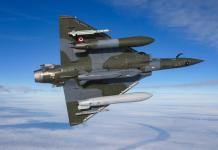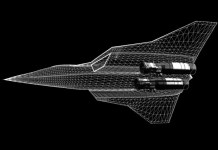Lockheed Martin, a formidable player in America’s defense domain, is propelling the production of High Mobility Artillery Rocket Systems (HIMARS) to achieve an exhilarating twofold surge by the year’s end.
US Blasts HBTSS To Counter Russian Plans Of ‘Blowing Up’ The Space & Neutralizing Its Military Edge
With this advanced weapon already proving its effectiveness in the ongoing conflict in Ukraine, the company aims to elevate its production capacity to an impressive 96 units per year by the end of 2024.
In a recent press release, Lockheed Martin highlighted the exceptional reliability and combat-proven performance of the High Mobility Artillery Rocket Systems (HIMARS). The company emphasized that HIMARS surpasses performance expectations, solidifying its status as a top-tier weapon system.
It added that the production capacity has already surged from 48 to 60 units annually, with plans firmly in place to achieve the ambitious goal of 96 units per year by the end of 2024.
“To meet this demand, the company has increased its tooling and maximized the space within its factory footprint. Lockheed Martin is also working with its long lead supply chain on increasing production and advancing funds to shorten manufacturing lead time,” the statement reads.
The company’s resolve to produce 96 units per year by the end of this year surpasses the previously projected timeline for this figure by almost one year, showcasing an impressive acceleration of the production capabilities.
Colby Badhwar, a defense analyst specializing in procurement and arms sales, highlighted that the initial target maximum rate for 2024 was set at 72 units per year, with the projection of reaching 96 units annually, not anticipated until October 2025.
Badhwar pointed out, “This significant increase in capacity is thanks to funding from the Ukraine Supplemental Appropriations Acts and significant Foreign Military Sales demand, with orders signed or pending from Australia, Estonia, Italy, Latvia, Lithuania, Morocco & Taiwan, and ongoing fulfillment for Poland & Ukraine, plus the US’ own contracts.”
In addition to HIMARS, the annual production of the shoulder-fired, platform-employed antitank missile system Javelin climbed to 2,400. By late 2026, it hopes to double its production capacity to 3,960 Javelins annually.
This year, the company will supply over 10,000 Guided Multiple Launch Rocket Systems (GMLRS), with plans to raise production to 14,000 units annually by 2025.
Furthermore, Lockheed announced that it has committed funding to raise the PAC-3 MSE air defense missile’s yearly manufacturing rates to 650 by 2027.
HIMARS Gains Global Traction
The High Mobility Artillery Rocket System (HIMARS) has emerged as a pivotal asset in modern warfare, offering a dynamic solution to diverse battlefield challenges. Developed in the United States, HIMARS presents a mobile artillery platform capable of deploying various munitions swiftly and precisely.
With the capacity to launch six MLRS series rockets or one ATACMS tactical missile, it delivers a responsive defense against a range of threats.
Weighing 10,886 kg and boasting a top road speed of 85 km/h, the system ensures rapid deployment in conflict zones, enhancing operational flexibility.
The system’s firing control capabilities are noteworthy, enabling high precision across different ammunition types.
With firing ranges extending up to 45 km with the ER-MLRS rocket, 70 km with the advanced GMLRS rocket, and a striking 300 km with tactical missiles, HIMARS provides an extensive reach for engaging distant targets, bolstering military endeavors across diverse terrains.

Operated by a crew of three, HIMARS maintains a compact design, measuring 5.046 meters in length, 2.16 meters in width, and 2.251 meters in height. This compactness facilitates swift maneuverability on the battlefield, ensuring agile artillery support for ground forces.
Widely utilized by numerous countries worldwide, including Romania, Singapore, Ukraine, Poland, and the United States, HIMARS has earned international recognition for its adaptability and effectiveness. Australia, Taiwan, Estonia, Italy, Morocco, and Lithuania are among the countries slated to operate this system in the future.
The conflict in Ukraine has notably heightened the demand for HIMARS systems, showcasing their pivotal role in altering battlefield dynamics. These rocket launchers have empowered Ukrainian forces to effectively engage targets deep within the Russian front lines.
In response to escalating demand, Lockheed Martin plans to ramp up HIMARS production to 96 launchers annually, a significant increase from the current 60. This strategic decision follows the delivery of 20 HIMARS to Ukraine by the United States, marking a substantial impact on ground operations.
Moreover, HIMARS has garnered attention beyond military circles, becoming the subject of a music video tribute and inspiring social media accounts. Phrases like “Is it HIMARS o’clock?” have emerged, reflecting the excitement surrounding Ukraine’s adept use of HIMARS strikes to taunt Russian forces.
- Contact the author(s) at ashishmichel(at)gmail.com
- Follow EurAsian Times on Google News




